The Maximalist Storytelling in Alex Ross' Fantastic Four: Full Circle
It’s like Alex Ross had a homework assignment— create your own Lee/Kirby Fantastic Four story.
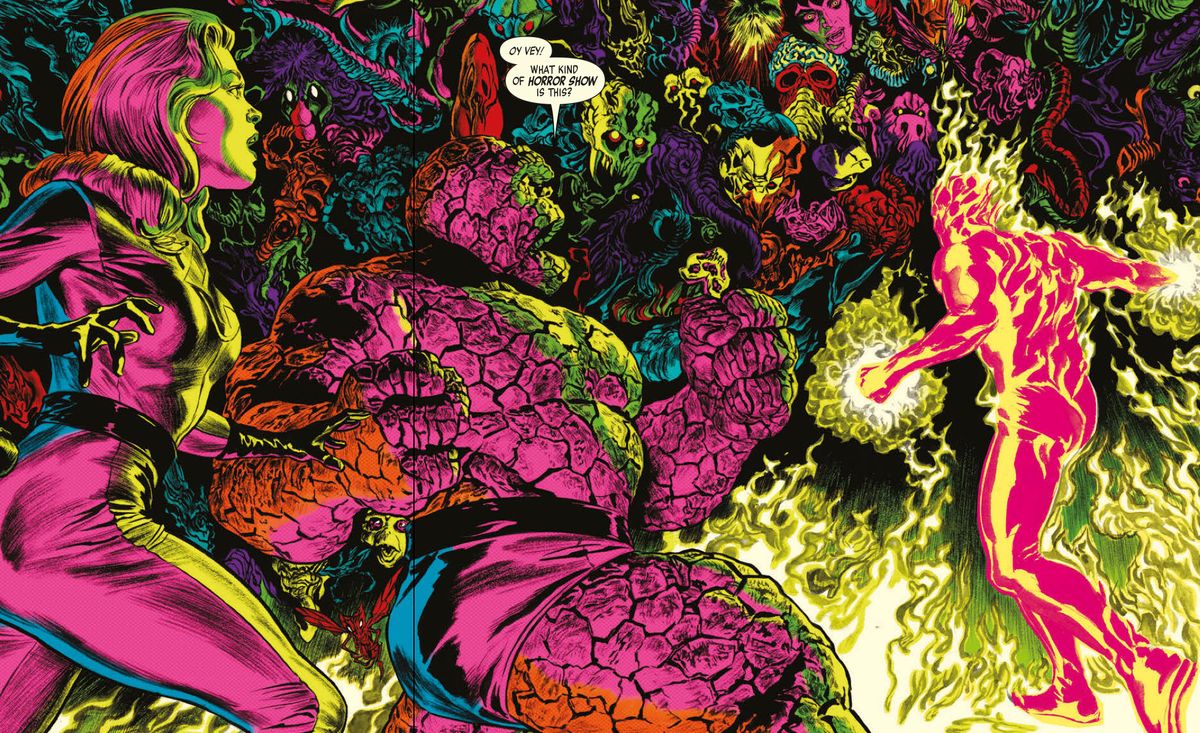
Fantastic Four: Full Circle opens on a rainy night, focused on a monster or a man standing alone in the rain. Alex Ross’ story begins much like Fantastic Four #51 where the Thing was mysteriously pulled toward a stranger’s residence. But this new story begins with a ragged figure standing outside of the classic Baxter Building, Ben Grimm and his family’s home. With that opening image, Ross shows us just what kind of story he is going to tell; a “classic” Fantastic Four story that builds on the work of Stan Lee and Jack Kirby, equal parts homage and exploration of those early Marvel texts. Four intrepid adventurers facing the unknown together, a family forged through the mysteries of the world around them– that’s what we know of these characters. Ross uses that familiarity to throw us into his story. This is the story of the Fantastic Four and what happens on a dark and rainy night in the Baxter Building.
When that mysterious figure makes his way into the Baxter Building, interrupting one of Ben Grimm’s midnight Dagwood sandwiches, the Thing realizes that he knows this figure having encountered him in the aforementioned Fantastic Four #51 when the figure attempted to take Ben Grimm’s powers and place in the team to get at Reed Richards. It’s still a mystery of who he is or where he came from but all indications point to his origin being the Negative Zone, an at times horrific anti-matter funhouse mirror of our universe (and another Lee/Kirby creation.) After fighting off a swarm of nasties that explode out of the stranger’s mouth in their home, the quartet does what they do best and plunge into the mystery of the Negative Zone, trying to Scooby Doo what they just experienced.
Chances are that you know who the Fantastic Four are if you’ve picked up this book. But if you’re here just for Alex Ross, he’s included one of his patented 2-page origin summaries for you as part of the book’s dust jacket. This origin recap is the only portion that’s fully painted as you would expect from Ross, a highlight reel of the first half of the first issue to feature these characters. At best, it’s a perfunctory inclusion of who and what these characters are without really telling you anything about who Reed Richards, Susan Richards, Johnny Storm, or Ben Grimm really are.
Fantastic Four: Full Circle doesn’t look like an Alex Ross comic beyond that introductory recap. After that two-pager, he sets aside his usual paints and draws most of this book in ink and line (with an occasional Kirby collage flourish thrown in as well,) just like Kirby did. For an artist who made his career through the “realistic” paintings of Marvels and Kingdom Come, Ross shows he can work much more traditionally, following in the footsteps of Kirby like so many others before have. But for as much Kirby as there is in this book, you have to recognize the influences of other FF artists like Rich Buckler, John Buscema, and most importantly Joe Sinnott in Ross’ artwork. Ross’ art as well as his writing is firmly planted in the second hundred issues of Fantastic Four as much as it is in the first hundred issues. So much so that this book often feels like it could be an annual or a Giant-Sized issue from the 1970s more than it feels like a comic from 2022.
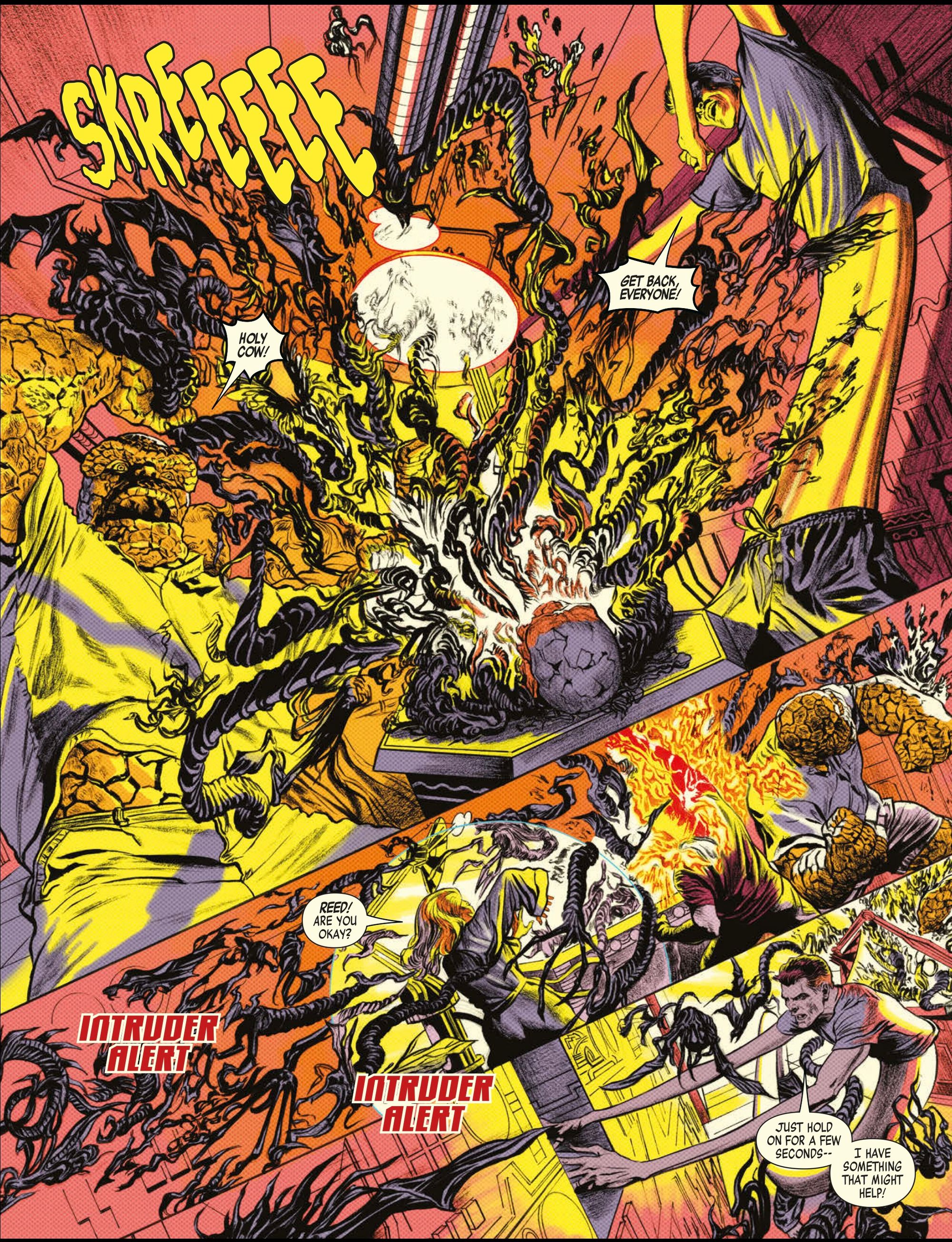
It’s hard imagining Ross as a maximalist but that’s what he’s doing here, filling every page with details and colors to keep your eye darting around the page. It’s a busy book as Ross overwhelms your senses with so much chicken scratching, without successfully creating any sense of depth to any of these images. His linework and his coloring flatten everything out until the picture plane becomes a mess of shapes and blobs that you need to work to decipher. In the Negative Zone, he colors this like a black light poster (even one of the characters comments on the weird hues in an old foes fortress) but all of his unique coloring, rendered in unwavering hues and concentrations, pulls the focus of the foreground and background of every image to one indistinguishable level, barely ever creating a place for you to focus just for a moment of rest while reading the book.
Weirdly, even though it’s harder to read, Ross’s artwork has barely ever felt this vibrant or alive. By forcing you to dig for the moment in each image, Ross keeps you actively involved in what’s happening as you try to peel back the layers of each image. It’s a weird frustration with this book, trying to visually read it when Ross, an artist who usually is very staid because of his clarity, works to throw so much at you that there’s nowhere to just stop and take in the image; you have to take in a whole page at a time, working to use figure out what Reed Richards is doing. The overwhelming visual presence of this story is what makes this something more than just another issue of The Fantastic Four.
Because, frankly, that’s what the story is— just another issue of Fantastic Four. Probably a good issue but still just an issue of it. There’s nothing new, unique, or particularly memorable about the way that Ross writes these characters. It’s the same way that Stan Lee, Gerry Conway, Marv Wolfman and so many others did, once again showing that Ross is a student of the first two decades of Fantastic Four comics. There are little nods to more recent continuity; a blink-and-you’ll-miss-it short of Valerie Richards, a possible reference to Jonathan Hickman’s recent-ish run (just to show that Ross is up on what the kids are doing nowadays?) but Ross isn’t saying anything with or about these characters that hundreds of issues haven’t already covered with them.
Ross takes a very down-to-basics approach with this story. His goal is to tell a Fantastic Four story and that’s what he does, with equal mixes of adventure, exploration, and family dynamics thrown into the mix. There’s an attempt for this to be an evergreen FF story, one largely free from the confines of any continuity (except for the already mentioned occasional nods) to get to the core of the characters and the story. In that way, he very much borrows from his Astro City collaborator Kurt Busiek in the approach of trying to be faithful to the core tenets of the kind of story that he’s trying to tell.
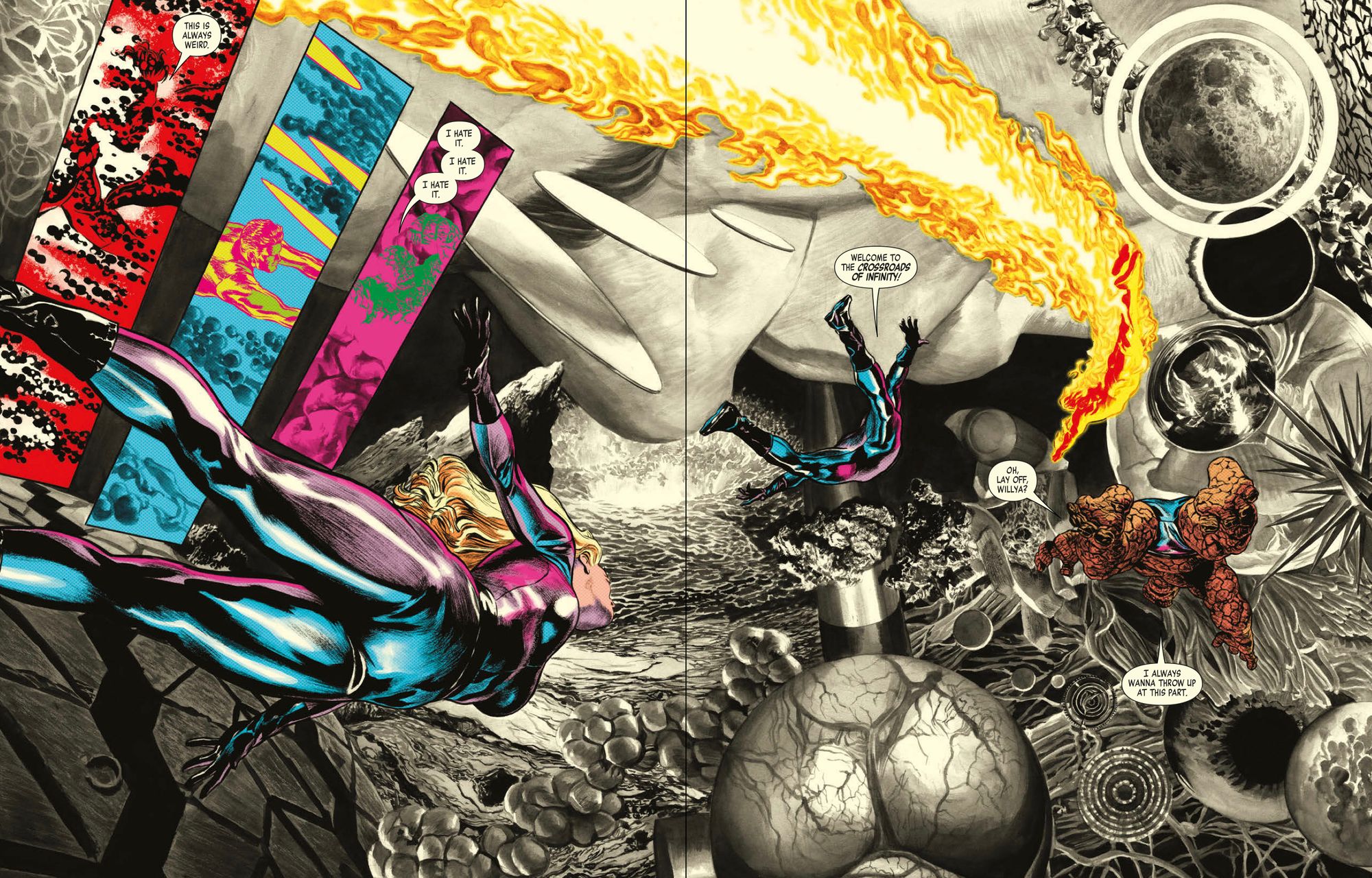
Those core tenets are the characters; this is largely a character piece that’s done its homework on the characters. Ross knows who they are because of all of the work of the writers and artists who have come before him. He obviously has had his ideas of what has worked and what hasn’t as he demonstrates on the pages that he’s done his homework of reading all of these FF stories to process them and spit something “original” out. This is like showing your work on a math test; Ross shows how he’s taken all of the input of past stories and almost backward engineered what a Fantastic Four story should be: pseudo-scientific family adventure.
If this was any other issue of Fantastic Four like an annual or an anniversary issue, it would be easy to overlook all of that and see this as a celebration of the foundational texts of the Marvel universe. And that’s what it still is, just wrapped up in the prestige of an elevated presentation; a graphic novel as the kids like to call it. Ross capably shows off his craftsmanship as an artist and as a writer here, delivering all of the expected beats of this kind of story. But it delivers just what you would expect out of it, nothing less and, more disappointingly, nothing more. This will be a book that in a few years you’ll pull off of your shelf and wonder why didn’t they ever go all the way and do an actual black light version of Alex Ross’s art.
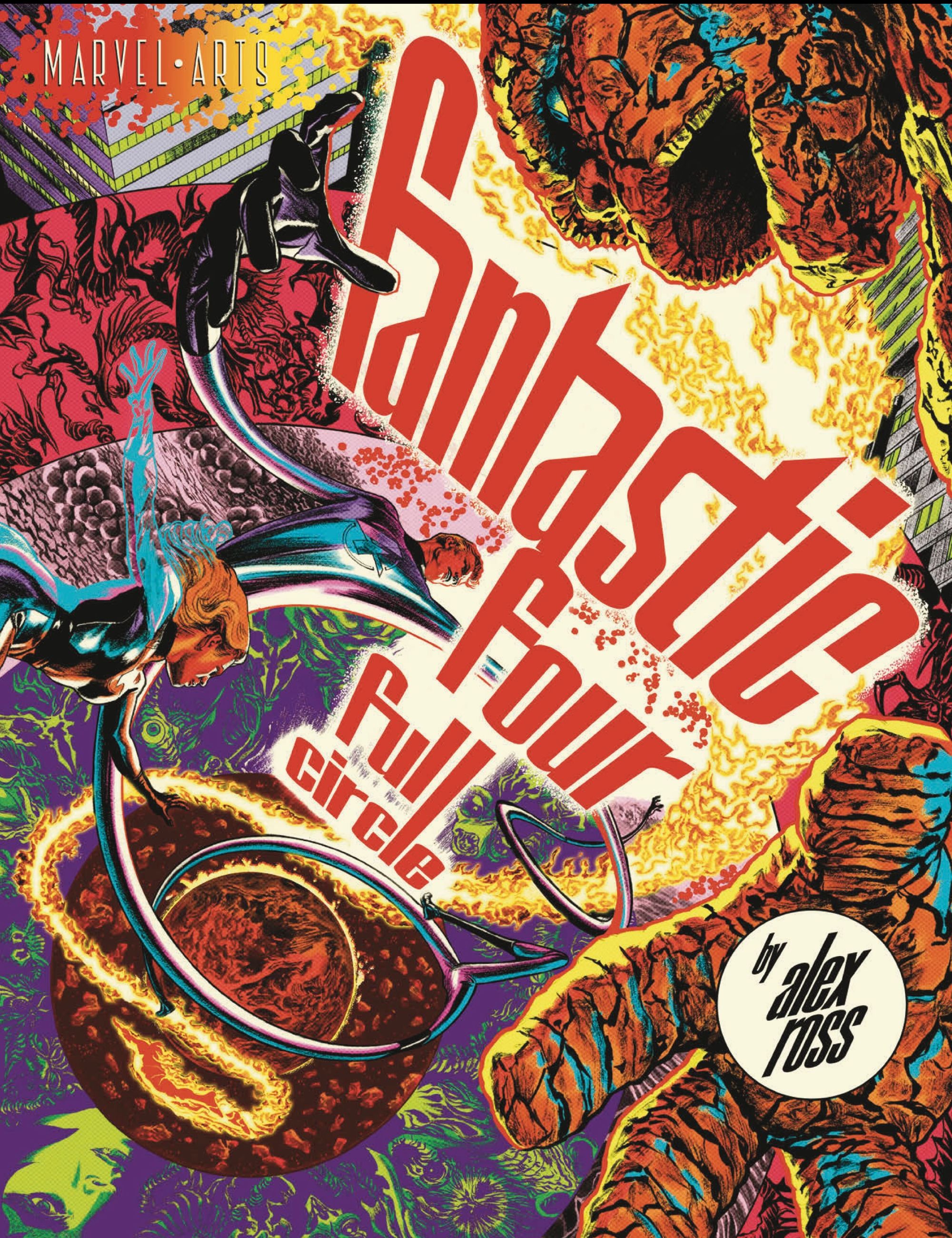


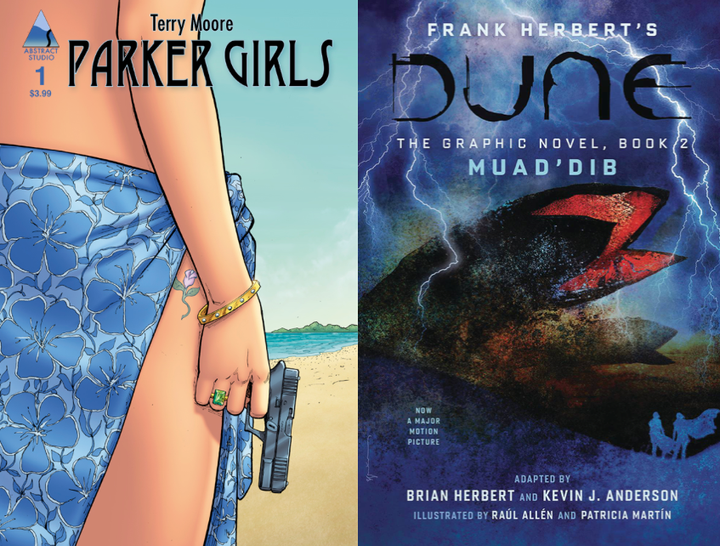
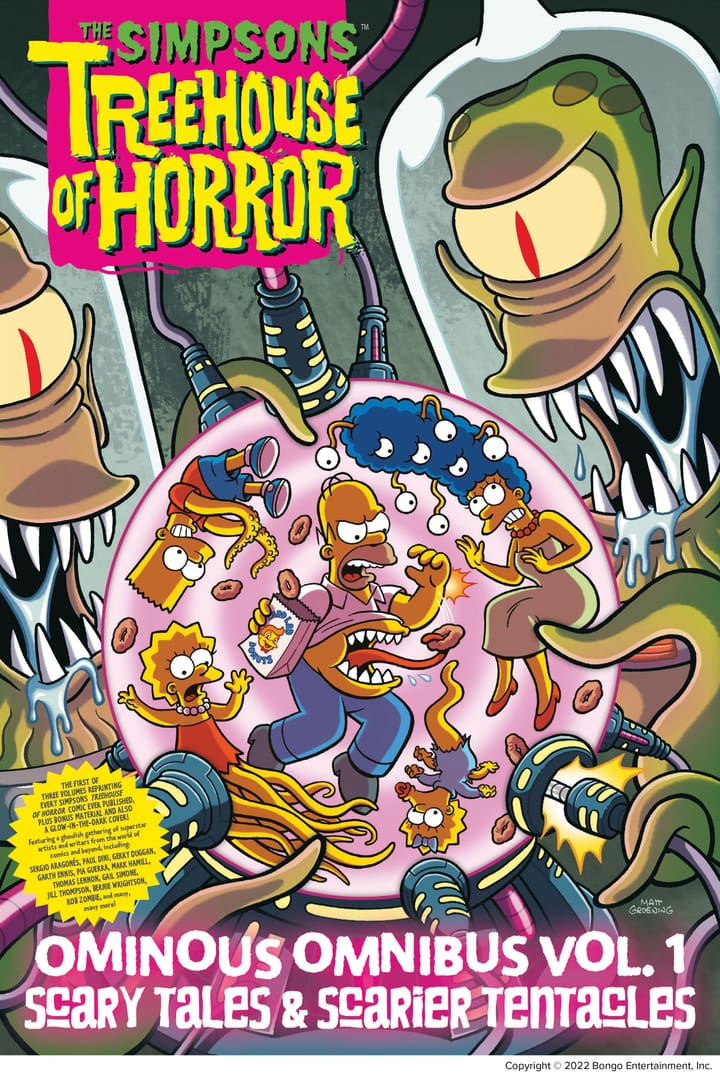
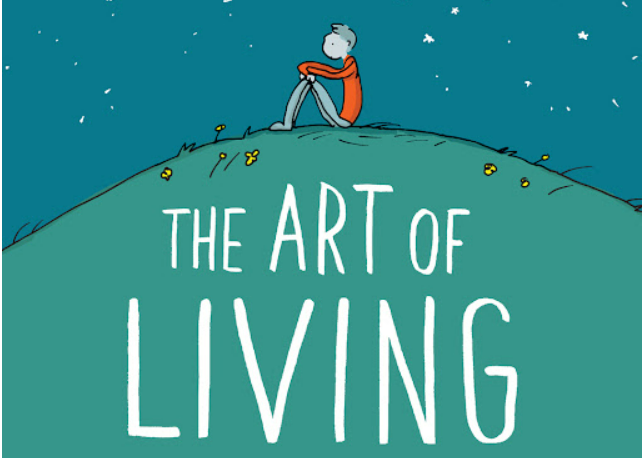
Comments ()